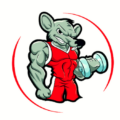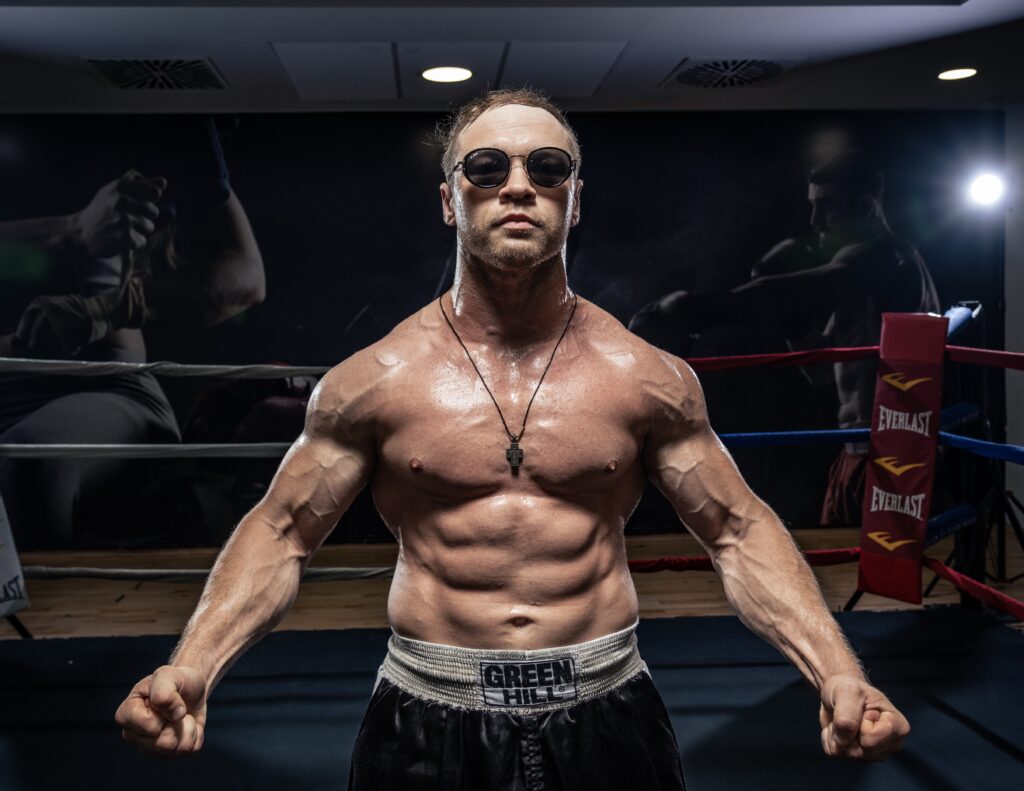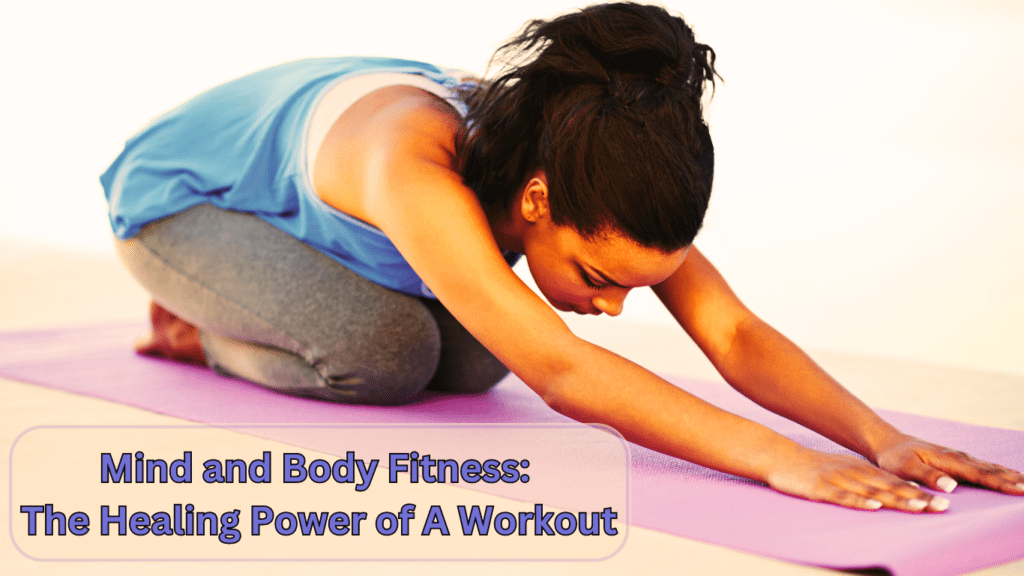Mastering Bodybuilding Poses for Peak Physique Development
In this article, we will explore the essential bodybuilding poses that play a crucial role in highlighting muscle symmetry, achieving balanced aesthetics, and maximizing visual appeal.
Bodybuilding poses are more than just positions meant to show off muscles. They serve as essential tools for bodybuilders to highlight muscle definition, symmetry, and overall aesthetic appeal. Whether you’re competing on stage or striving to improve your physique, mastering bodybuilding poses is a crucial step toward showcasing your hard work and dedication to building a well-balanced, impressive physique.
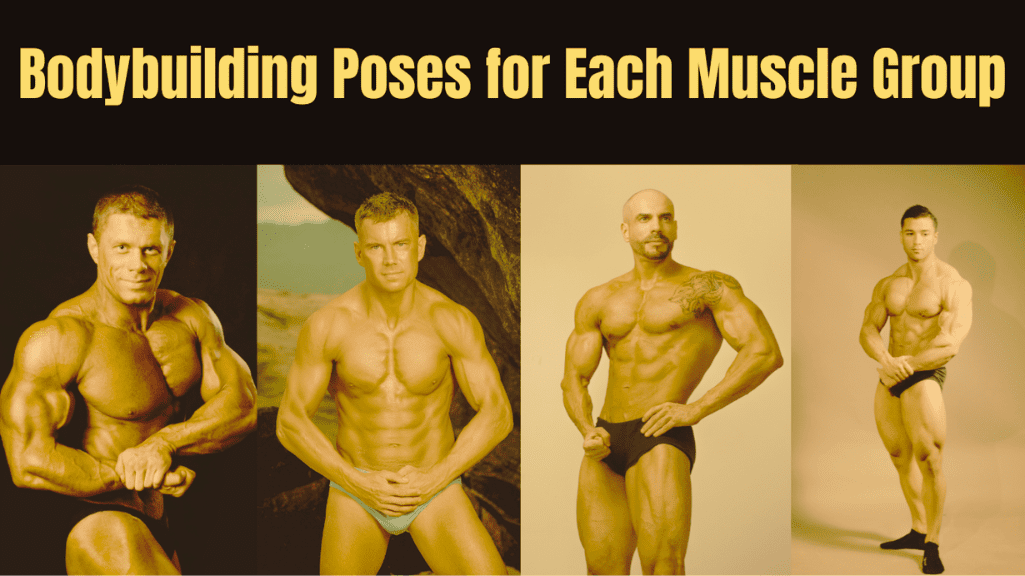
Bodybuilding poses are designed to target specific muscle groups, allowing bodybuilders to emphasize different areas of their bodies. By understanding how to execute these poses effectively, individuals can accentuate their strengths and improve their overall presentation. Each pose serves a purpose, whether it’s showcasing mass, detail, or proportion, making them essential for any serious bodybuilder looking to display their progress.
The mastery of bodybuilding poses is not just about striking a static position; it’s about creating a visual narrative of strength, symmetry, and hard-earned muscle development. Whether you’re a beginner or a seasoned competitor, perfecting these poses will ensure that your physique looks its best during competitions, photoshoots, or simply in the gym mirror.
Purpose of the Article
The purpose of this article is to provide a practical guide to bodybuilding poses, focusing on one pose per muscle group. We’ll explore how each pose can highlight its respective muscle development and why these poses are crucial for both aesthetics and functionality in bodybuilding. Additionally, we will touch on the importance of integrating yoga poses into a bodybuilding routine for improved flexibility, recovery, and overall performance.
Subscribe And Get Our Free E-Book:Unlocking The Power Of Nutrition-Supplements, Substitutes, and Superfoods!
Mastering Bodybuilding Poses-Brief Explanation
Bodybuilding poses play a crucial role in showcasing muscle development, symmetry, and overall aesthetic appeal. These poses allow bodybuilders to highlight specific muscle groups, ensuring a balanced and well-rounded physique. Whether preparing for a competition or simply working on overall fitness, mastering these poses is essential for presenting your body in the most flattering way possible.
The importance of the poses for bodybuilding extends beyond just aesthetics. They help in demonstrating strength, control, and discipline, showcasing the results of months or even years of hard work in the gym. By focusing on form and symmetry, these poses enable athletes to highlight their physical improvements while creating a powerful visual impact.
Additionally, they contribute to building confidence. As bodybuilders refine their poses, they gain a better understanding of their body’s capabilities, leading to greater self-assurance on stage or in front of others. These positions also aid in improving posture, which can have long-term benefits for both physical and mental well-being.
Perfecting Each Pose
Perfecting bodybuilding poses requires both practice and attention to detail. Here are some tips for mastering them:
- Consistent practice – Regularly performing each pose allows your muscles to contract and adapt properly.
- Form and symmetry – Focus on maintaining symmetry across your body to present a balanced physique.
- Flexibility – Incorporate stretching and mobility work to enhance muscle definition and range of motion.
- Mind-muscle connection – Focus on contracting the targeted muscle fully to create a more defined and controlled look.
By integrating these elements into your routine, your bodybuilding poses will improve over time, leading to a more impressive and polished physique.
Judges’ Focus During Bodybuilding Competitions
| Factor | Percentage (%) | Impact on Final Score (%) | Judge Preference | Frequency of Emphasis (1-10) |
|---|---|---|---|---|
| Symmetry | 30% | 35% | High | 9 |
| Muscle Mass | 25% | 30% | High | 8 |
| Definition | 20% | 20% | Moderate | 7 |
| Conditioning | 15% | 10% | Moderate | 6 |
| Presentation | 10% | 5% | Low | 5 |
Explanation:
- Impact on Final Score: This shows how much each factor contributes to the final score.
- Judge Preference: This is an overall rating of how much judges value the factor (High, Moderate, Low).
- Frequency of Emphasis: How often judges will pay attention to each factor during a competition, ranked on a scale of 1–10.
Bodybuilding poses play a crucial role in showcasing muscle development, symmetry, and overall aesthetic appeal. Whether you’re using them for competition, training, or personal fitness goals, mastering these poses allows you to fully present your hard-earned progress. Combined with yoga poses, they create a well-rounded approach to bodybuilding, helping you perform better both physically and mentally.
Bodybuilding Poses Tutorial Video
Bodybuilding Poses – Quadriceps – Front Double Biceps Pose
Bodybuilding poses are a fundamental part of the sport, providing athletes with the opportunity to showcase their hard-earned muscle development, symmetry, and conditioning. Among the wide variety of bodybuilding poses, the Front Double Biceps Pose is one of the most iconic and essential. This pose is specifically designed to highlight the biceps muscles while also emphasizing overall upper body balance and proportion.
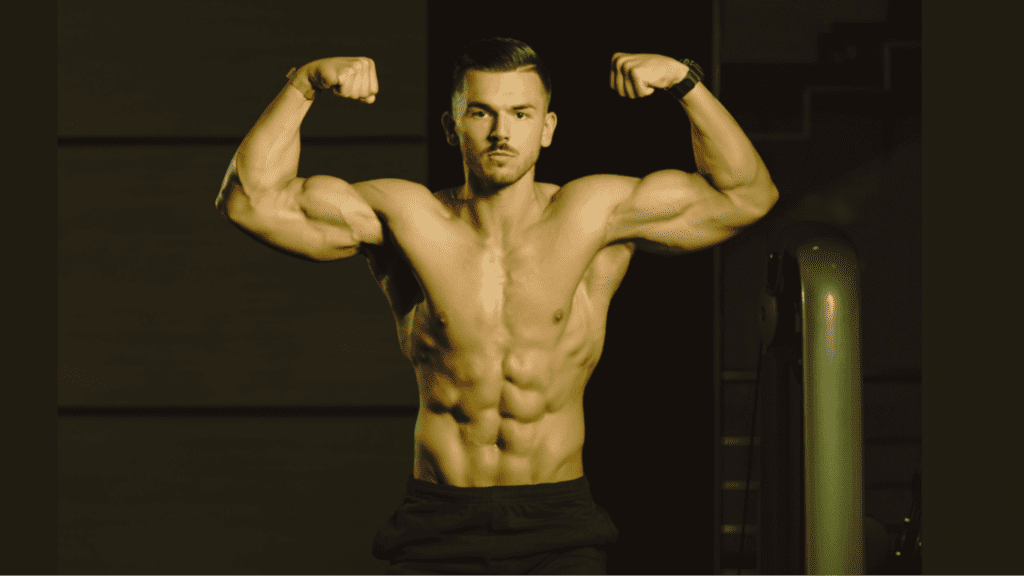
Why This Pose?
The Front Double Biceps Pose holds a special place among bodybuilding poses because it allows competitors to demonstrate the size, shape, and peak of their biceps. However, this pose goes beyond just the arms—it also showcases the shoulders, chest, and even the upper back to some extent. Judges in bodybuilding competitions rely heavily on this pose to assess not only arm development but also the athlete’s overall upper body symmetry and muscularity. A well-executed Front Double Biceps Pose can make a significant difference in scoring, making it a must-master for any serious bodybuilder.
Step-by-Step Breakdown
Performing the Front Double Biceps Pose with precision and control requires focus on several key elements. Here’s a detailed step-by-step guide to executing one of the most classic bodybuilding poses effectively:
Facial Expression and Confidence – While not a muscle, your facial expression and confidence contribute to the overall impact of the pose. A strong, focused look helps complete the presentation.
Position – Start by standing tall with your feet approximately shoulder-width apart. Maintaining good posture with your chest up and shoulders back will help create the best overall shape.
Arm Position – Raise both arms to shoulder height and bend your elbows so that your forearms are perpendicular to the floor. This position creates the classic “double biceps” flex.
Flex the Biceps – Contract your biceps hard, focusing on creating a peak and fullness. The goal is to maximize the size and definition of the biceps while maintaining a clean line.
Engage the Upper Body – Tighten your chest muscles and flare your lats slightly to add width and balance to the pose. Engaging your shoulders will further enhance the overall upper body shape.
Maintain Symmetry – Keep both arms flexed evenly and ensure your body weight is distributed evenly on both feet. Symmetry and balance are key factors in successful bodybuilding poses.
Importance of Mastering the Front Double Biceps Pose
Mastering key bodybuilding poses such as the Front Double Biceps is crucial for anyone serious about the sport. This pose not only spotlights the biceps but also serves as a benchmark for upper body development, including the chest, shoulders, and lats. Consistent practice helps athletes refine their muscle control and presentation skills, enabling them to highlight their strengths and minimize any weaknesses.
In competitions, bodybuilding poses are the primary way judges evaluate physique aesthetics, conditioning, and muscle maturity. The Front Double Biceps Pose, in particular, can reveal an athlete’s level of muscular development and symmetry, making it an essential part of any posing routine. For many competitors, perfecting this pose is a lifelong pursuit that evolves as their physique improves.
In summary, the Front Double Biceps Pose remains a cornerstone among bodybuilding poses. Its ability to showcase the biceps alongside the upper body’s overall muscularity and balance makes it indispensable for athletes aiming to impress both judges and audiences alike. By dedicating time and effort to mastering this pose, bodybuilders can effectively display the results of their hard work and dedication.
Bodybuilding Poses for Hamstrings – Rear Double Biceps Pose
Bodybuilding poses are a crucial part of showcasing a physique on stage, helping athletes emphasize specific muscle groups and highlight symmetry, balance, and definition. Among the most iconic and effective bodybuilding poses for lower-body presentation is the Rear Double Biceps Pose. While often celebrated for its upper-body flair—displaying the biceps, deltoids, and back—it’s also one of the most powerful bodybuilding poses for emphasizing hamstring development.
This pose not only reveals the size and conditioning of the arms and back but also creates a visual window into the structure, density, and separation of the hamstrings, glutes, and calves. For bodybuilders aiming to stand out from the rear, mastering this pose is essential.
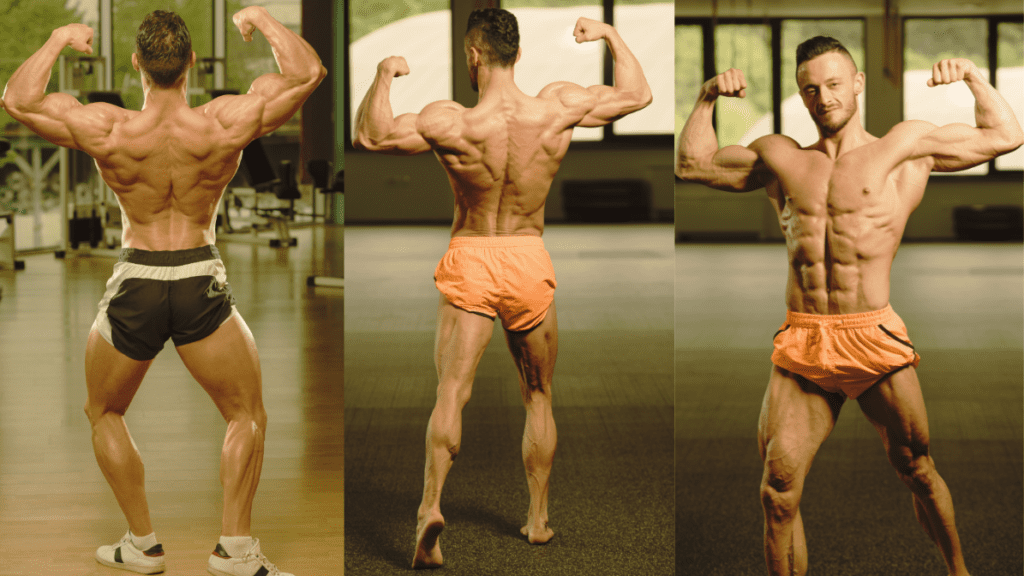
Why This Pose Works for Hamstrings
When executed properly, the Rear Double Biceps Pose forces tight engagement of the hamstrings. The act of pulling back the arms and slightly flexing the legs draws attention to the lines and curves of the posterior chain. The hamstrings, in particular, are stretched and flexed simultaneously, which enhances their visibility under stage lighting.
Key Benefits:
- Hamstring Flexion and Definition: The slight knee bend and hip hinge required during this pose puts the hamstrings under controlled tension. This exposes their density and separation, especially between the glutes and knees.
- Symmetry Awareness: Since both legs are visible from behind, this pose allows for direct comparison between the left and right hamstrings, exposing any muscular imbalance.
- Full Lower Body View: Alongside the hamstrings, the glutes and calves are also flexed, giving judges a complete view of the athlete’s lower-body development from the rear.
Step-by-Step: How to Perform the Rear Double Biceps Pose
Initial Positioning: Stand with feet shoulder-width apart and your back facing the judges. Keep your torso upright and relaxed before initiating the pose.
Set the Legs: Slightly bend both knees and push your glutes back just a little. Engage the hamstrings by tightening the thighs and driving your heels into the floor. This contraction brings out the hamstring curve and separation.
Raise the Arms: Bring both arms up in a double biceps position, keeping the elbows at shoulder height or slightly above. Flex the biceps while flaring the lats and pulling the shoulders back.
Engage Core and Glutes: Tighten your glutes and maintain a strong core to avoid leaning forward. This positioning supports proper hamstring display while stabilizing your upper-body posture.
Final Details: Press your toes into the stage for calf engagement, keep the chest lifted, and hold the pose confidently for several seconds.
Importance of This Pose in Competitive Bodybuilding
In professional competitions, the Rear Double Biceps Pose often separates the elite from the average. Judges use it to assess rear symmetry, conditioning, and overall physique harmony. If hamstrings are underdeveloped or lack separation, it becomes glaringly obvious in this position. That’s why this pose is a benchmark for lower-body detail.
Frequent practice of this pose helps athletes:
- Track their posterior development over time
- Identify weak spots, especially in hamstrings or glutes
- Improve posing stamina and confidence on stage
- Build the mind-muscle connection critical for stage presence
Among all bodybuilding poses, the Rear Double Biceps Pose stands out for its ability to showcase hamstring development in a comprehensive and visually striking way. It allows athletes to demonstrate muscular balance between upper and lower body while offering a direct look at the posterior chain. Whether you’re an amateur or a seasoned competitor, integrating this pose into your posing routine is key to a well-rounded and competitive presentation. Through consistent practice and mindful execution, you’ll ensure that your hamstrings are displayed at their absolute best—contributing to a physique that commands attention from every angle.
Bodybuilding Poses – Chest – Side Chest Pose
Bodybuilding poses are not just a way to show off muscle—they are a vital skill that requires precision, control, and an understanding of the human physique. Among these poses, the Side Chest Pose stands out as one of the most iconic and important for highlighting upper-body development, particularly the pectorals. While it’s easy to focus solely on size during training, the Side Chest Pose teaches athletes how to showcase depth, muscle separation, and upper-body symmetry in a single, powerful moment.
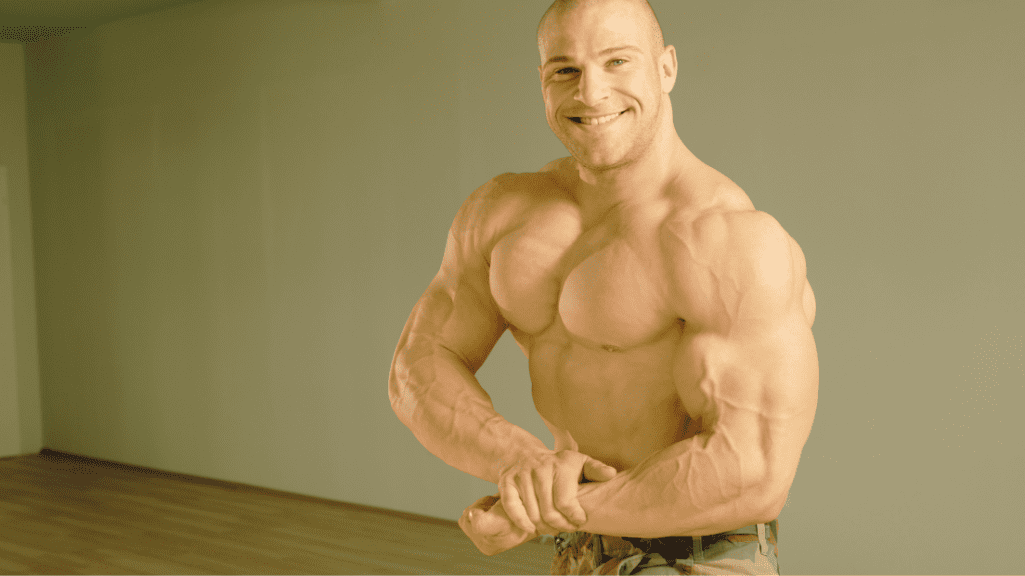
Why the Side Chest Pose is Essential
The Side Chest Pose is one of the most frequently used bodybuilding poses on stage because of its ability to emphasize the chest’s thickness and roundness from a side angle. Unlike front-facing poses that show width, this one gives a three-dimensional view of the chest and surrounding muscles. It’s particularly useful for showing how well-developed and balanced the upper body is, especially when it comes to the interaction between the pectorals, delts, triceps, and even the arms and core.
This pose also reveals details about posture, muscular control, and conditioning. Judges can assess whether an athlete has symmetrical pectoral development, well-defined arm muscles, and tight abdominals—all from one position.
Step-by-Step Guide to Executing the Side Chest Pose
Initial Positioning
Stand with your side facing the judges. The leg closest to the judges should be slightly bent and flexed, while the back leg can be positioned for balance. This creates a stable base.
Grip and Setup
Bring your front arm across your torso and grab the wrist or hand of your rear arm. This grip allows you to pull your rear arm in, pressing the chest forward and out.
Chest Engagement
Expand your ribcage by taking a deep breath and elevating the chest. Push the chest toward the audience while squeezing your pectorals to create visible separation and definition.
Arm and Shoulder Tension
Flex the biceps and triceps subtly while keeping your shoulders rounded and stable. This helps create a fuller appearance and contributes to the overall aesthetic.
Lower Body Control
Don’t neglect the legs. Contract your glutes and hamstrings to maintain a strong posture and complete the full-body illusion of strength and proportion.
Core Tightness
Engage your core muscles, especially your obliques and abdominals, to prevent your midsection from appearing soft or relaxed. A tight waist can dramatically improve the look of the pose.
What This Pose Reveals
The Side Chest Pose is not just about showcasing size—it tells a story of balance, control, and training precision. A well-executed pose will highlight:
- Chest fullness and roundness
- Pectoral separation from the shoulders and arms
- Symmetry between left and right sides
- Control in flexing both upper and lower body simultaneously
- Postural strength and stage confidence
When done correctly, this pose gives the illusion of a powerful, well-balanced upper body while maintaining harmony with the rest of the physique.
Importance of Mastering the Side Chest Pose
Practicing the Side Chest Pose regularly helps bodybuilders fine-tune their presentation for maximum visual impact. As one of the classic bodybuilding poses, it allows competitors to analyze their progress over time. Athletes can see where their pectoral development may be lacking, how their triceps and delts complement the chest, and whether their torso presents the desired V-taper or tight midsection.
This pose also builds posing stamina. Holding this position under stage lighting while maintaining a smile, posture, and muscle tension requires endurance and conditioning—key elements that separate experienced competitors from beginners.
The Side Chest Pose is a foundational part of bodybuilding poses, especially for athletes looking to highlight upper-body mass and aesthetics. It brings together elements of symmetry, muscle control, and visual storytelling in a single snapshot. By mastering this pose and integrating it into your posing routine, you ensure your chest—and your entire upper body—is presented in the most powerful and professional way possible. Whether you’re a seasoned competitor or a beginner learning the ropes, the Side Chest Pose should be a top priority in your posing practice.
Bodybuilding Poses – Back – Back Double Biceps Pose
Bodybuilding poses are essential tools for any serious athlete aiming to present their physique at its absolute best. Among the most impactful poses for showing off back development is the Back Double Biceps Pose. This pose not only emphasizes size and symmetry but also reveals the intricate detail and conditioning of the upper and lower back muscles. It is one of the core bodybuilding poses used in competition and training to assess the muscular balance of the posterior chain.
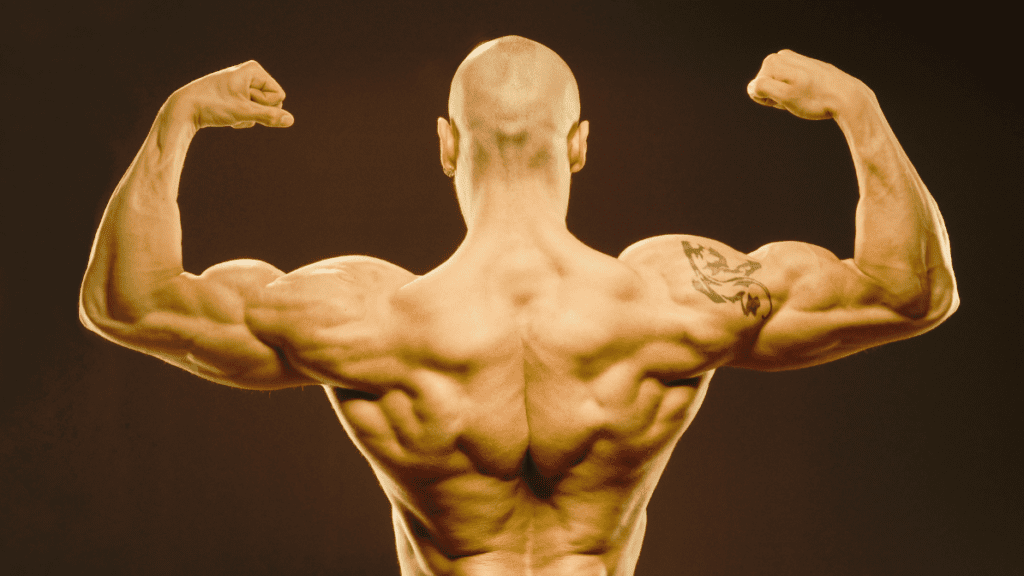
Why the Back Double Biceps Pose is So Important
The Back Double Biceps Pose is a staple in every bodybuilding lineup because it showcases a wide range of muscle groups in a single stance. The lats flare outward to create the signature “V-taper,” indicating width and upper-body dominance. At the same time, the traps, rear deltoids, rhomboids, and spinal erectors are activated, showing both thickness and muscular control.
What makes this pose unique is that it doesn’t just display one muscle—it reveals the harmony between upper back mass, muscle density, and the fine details of conditioning. For competitive bodybuilders, it’s a chance to show judges that you’ve trained your posterior with the same intensity and precision as your front.
Step-by-Step Execution of the Back Double Biceps Pose
To perform the Back Double Biceps Pose correctly, each movement must be deliberate and synchronized with muscle engagement:
Symmetry and Core Control
Keep your spine tall and your midsection tight. Squeeze your glutes and ensure your back remains straight, as posture plays a huge role in how clean the pose looks.
Initial Setup
Stand with your back to the audience or judges. Feet should be shoulder-width apart or slightly staggered for stability and aesthetics.
Leg Positioning
Slightly bend the knees and engage the hamstrings and calves. This ensures that your lower body complements the upper and adds to the total package.
Arm Positioning
Raise both arms into a double biceps position. Elbows should be level with the shoulders, and the arms fully flexed. Keep your wrists aligned and fists clenched.
Back Engagement
Contract the lats outward while pulling the scapulae slightly inward. This flares the back and gives width and depth. The traps and rhomboids should also be fully flexed.
What the Pose Reveals About Your Physique
This is one of the bodybuilding poses that can make or break a competitor. It reveals:
- Lat width and development
- Trap thickness and rear delt shape
- Symmetry between both sides of the back
- Lower back and glute conditioning
- Overall control and posing discipline
Even slight imbalances or weaknesses become visible, which is why this pose is often a turning point in judging.
Mastering the Back Double Biceps Pose
Becoming proficient in this pose takes more than strength—it requires posing practice, patience, and a well-rounded training program. Consistent posing practice helps improve your mind-muscle connection, especially in hard-to-see areas like the rear delts and spinal erectors.
Photographing or filming yourself while practicing the pose can provide feedback that mirrors what a judge would see. Over time, you’ll be able to adjust minor posture issues, improve flexing technique, and enhance overall stage presentation.
In the world of bodybuilding poses, the Back Double Biceps Pose is one of the most commanding and revealing. It allows athletes to demonstrate the culmination of years of back training, symmetry, and aesthetic refinement. With a combination of strategic muscle engagement and attention to detail, mastering this pose ensures that your hard-earned back development gets the spotlight it deserves. Whether you’re stepping on stage or refining your posing craft, this classic pose should remain a top priority in your posing arsenal.
Bodybuilding Poses – Triceps – Side Triceps Pose
Bodybuilding poses are critical tools for competitors and enthusiasts to showcase their muscle development and overall symmetry. One of the most essential poses for highlighting the triceps is the Side Triceps Pose. This classic stance emphasizes the size, shape, and definition of the triceps while also drawing attention to the shoulders, chest, and obliques. It serves as a complete upper-body display, making it a staple in all bodybuilding poses lineups.
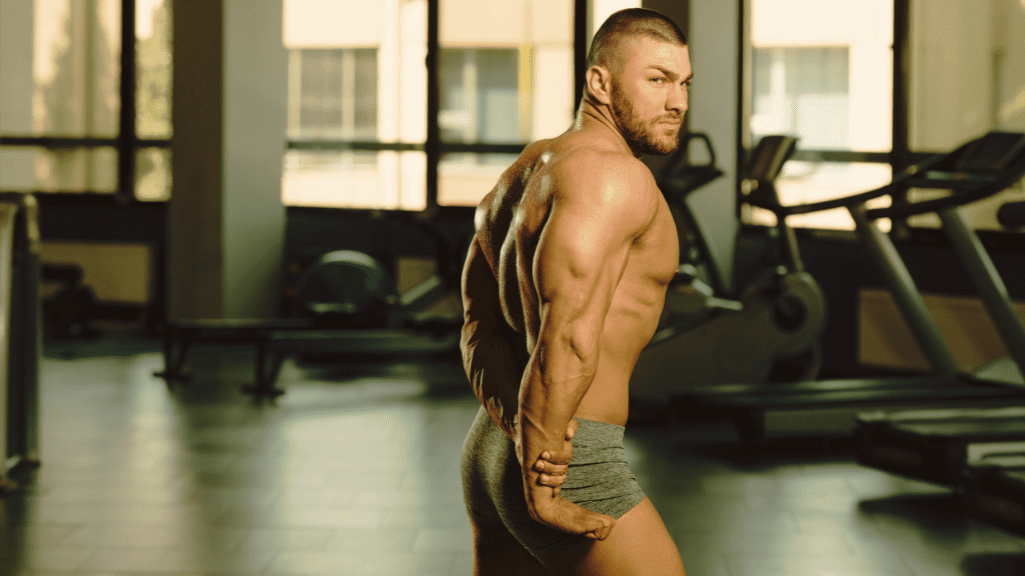
Why the Side Triceps Pose Is Essential
The Side Triceps Pose stands out for its ability to isolate and spotlight the triceps brachii, one of the most visually impressive muscles in the upper body. When executed properly, it reveals the deep cuts and striations in the triceps, showing both size and conditioning.
In addition to the triceps, this pose also subtly engages the deltoids, lats, obliques, and even the chest, which enhances the flow and balance of the physique. Judges often look for a clean line from the arm through the torso, and this pose provides exactly that when done with proper tension and control.
Step-by-Step Breakdown of the Side Triceps Pose
To get the most out of this pose, attention to detail is key. Here’s how to execute it correctly:
- Initial Position
Stand sideways to the audience or judges. One leg should be forward for balance, with the back leg slightly flexed. - Arm and Hand Placement
Extend one arm downward and bring the opposite hand across your torso to grasp the extended arm’s wrist or hand. This secures the triceps and allows for maximum contraction. - Triceps Contraction
Flex the extended arm hard, squeezing the triceps fully. Pull the shoulder back slightly to elongate the arm and bring out more muscle separation. - Full-Body Engagement
Engage your obliques, lats, chest, and core to maintain posture and create an aesthetic flow. Even the calves and quads may be flexed slightly to keep the body looking dynamic and balanced. - Symmetry and Expression
Keep a neutral or confident facial expression and ensure that your body lines are clean and symmetrical from top to bottom.
This pose is not only a test of arm development but also of overall posing control, which is what makes it one of the most demanding bodybuilding poses.
Importance of Mastering the Side Triceps Pose
The Side Triceps Pose is a valuable tool for evaluating both aesthetics and technical posing ability. It allows bodybuilders to assess:
- The thickness and separation of the triceps
- The transition between the arms and torso
- The balance between anterior and posterior upper-body muscles
- The effectiveness of their diet and conditioning protocols
Furthermore, the pose encourages practice in muscle control, breathing, and stage presence. It offers an opportunity to demonstrate not just raw muscle, but also precision, posture, and polish.
Among the many bodybuilding poses, the Side Triceps Pose holds a unique place for its ability to spotlight one of the most visually defining arm muscles. With attention to muscle engagement, symmetry, and presentation, this pose can elevate a competitor’s upper-body appearance dramatically. Whether you’re preparing for the stage or assessing progress in front of a mirror, mastering this pose is crucial for anyone serious about achieving a complete and aesthetic physique.
Bodybuilding Poses – Shoulders – Front Lat Spread Pose
Bodybuilding poses are essential for showcasing muscle development and symmetry, and the Front Lat Spread Pose is one of the most effective ways to highlight the shoulders. This iconic pose not only emphasizes the width and depth of the lats but also engages the deltoids, making it a powerful move for displaying shoulder development. It provides a full view of the upper body, with a focus on the lateral deltoids (middle part of the shoulder), which are key for achieving that broad, V-tapered look.
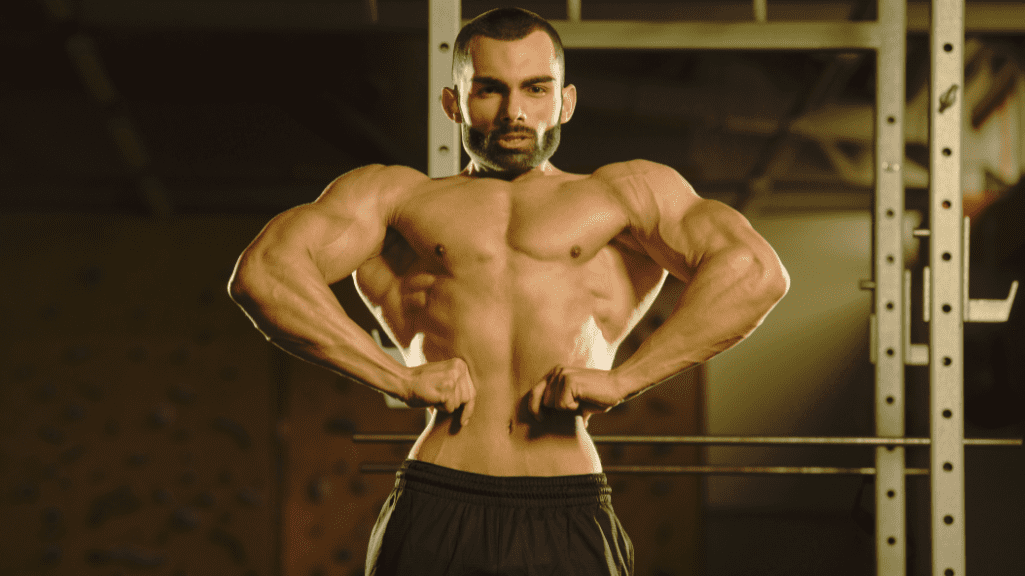
Alongside the deltoids, the Front Lat Spread Pose also reveals the chest and overall upper body symmetry. This makes it an essential pose in bodybuilding competitions, as it allows judges to evaluate the full balance of muscle groups and their definition.
Why This Pose?
The Front Lat Spread Pose is crucial for bodybuilders aiming to emphasize their shoulder muscles. When executed correctly, it spreads the lats while also fully engaging the deltoids. The result is a powerful pose that shows off the roundness and width of the shoulders, which are critical for creating a balanced and symmetrical physique. This pose also allows the bodybuilder to demonstrate the separation between the shoulders, lats, and chest.
By focusing on the shoulders while also displaying the lats, this pose creates a visually striking shape and ensures the upper body looks broad and well-proportioned. The Front Lat Spread Pose not only showcases the development of the deltoids but also highlights the overall quality of the physique. This is why it’s one of the most important bodybuilding poses in competition.
Step-by-Step Breakdown
To execute the Front Lat Spread Pose, precision and control are key. Here’s a step-by-step guide to master this pose:
- Positioning: Stand facing the judges with feet shoulder-width apart. Slightly bend your knees to stabilize your lower body.
- Spreading the Lats: Push your chest forward and pull your arms outward. Keep your elbows bent slightly to create a wide, flared-out look for the lats.
- Engage the Shoulders: Focus on raising your arms and engaging the lateral deltoids to make them pop. This is the key to showcasing your shoulder development in the pose.
- Symmetry: Ensure your body is symmetrical by keeping both arms evenly extended and your chest lifted. Your core should remain tight to maintain proper posture.
The Front Lat Spread Pose is an essential tool for bodybuilders who want to showcase their shoulders effectively. By properly executing this pose, athletes can highlight the fullness and roundness of the deltoids, which play a significant role in creating an impressive upper body.
Importance of Mastering the Front Lat Spread Pose
The Front Lat Spread Pose is indispensable for any bodybuilder looking to emphasize the shoulders in a competition. This pose not only reveals the definition of the deltoids but also highlights their proportionality with the chest and lats. By regularly practicing this pose, bodybuilders can track their shoulder development and ensure they’re showcasing their physique at its best during competitions.
In conclusion, the Front Lat Spread Pose is one of the most effective bodybuilding poses for emphasizing shoulder development. The position allows bodybuilders to display their lateral deltoids and achieve the V-taper effect, which is vital for presenting a balanced, symmetrical, and aesthetically pleasing physique.
Bodybuilding Poses – Trapezius and Neck – Traps Pose
Bodybuilding poses are essential for showcasing a well-defined and balanced physique. One of the key poses for highlighting the trapezius muscles is the Traps Pose. This pose focuses on the thickness, definition, and muscularity of the traps, providing a powerful visual display of upper back development. Additionally, it emphasizes balance by engaging the neck, shoulders, and even the biceps to create a complete upper-body presentation.
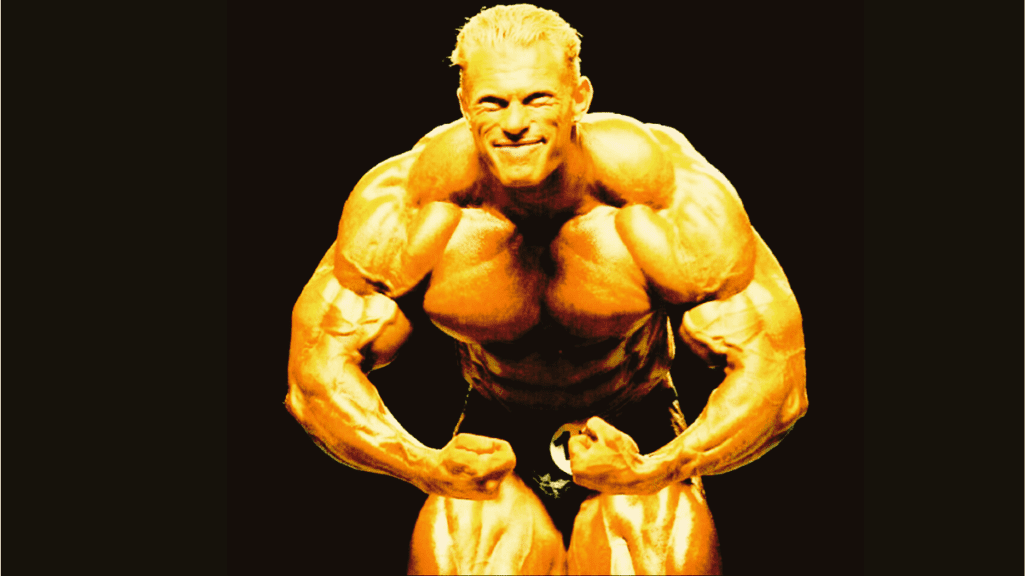
Why This Pose?
The Traps Pose is crucial for demonstrating the muscularity and thickness of the trapezius muscles. This pose not only highlights the traps but also works to balance the upper body by incorporating the neck and shoulders. The engagement of smaller muscles such as the biceps ensures that every aspect of the upper back is showcased for a well-rounded and symmetrical appearance.
Step-by-Step Breakdown
Performing the Traps Pose requires focus and precision. Here’s how to execute it:
- Position – Tilt your head slightly backward and flex the traps, squeezing the upper back muscles tightly.
- Muscle Engagement – Ensure shoulders and arms remain relaxed to avoid overshadowing the traps’ definition.
- Symmetry – Keep the biceps engaged slightly to maintain a balanced upper-body display.
- Focus – Concentrate on achieving a thick, powerful visual representation of the trapezius muscles.
This pose highlights the importance of bodybuilding poses in creating a balanced, muscular physique.
Importance of Mastering the Traps Pose
The Traps Pose plays a significant role in showcasing upper body aesthetics. By honing this pose, bodybuilders are able to emphasize the development of the trapezius muscles, ensuring they complement other areas like the neck, shoulders, and arms. This holistic approach helps create a visually stunning upper back, giving bodybuilders a more commanding stage presence.
Mastering the Traps Pose allows athletes to track their progress in upper back development while maintaining a symmetrical and aesthetically pleasing physique. The engagement of smaller muscles adds depth to the overall appearance, making the Traps Pose a key component of bodybuilding routines.
In conclusion, the Traps Pose is an essential bodybuilding pose that showcases the muscularity and balance of the trapezius muscles. By focusing on thickness and definition, combined with other areas like the neck, shoulders, and biceps, bodybuilders can achieve a more complete upper-body display. With consistent practice, the Traps Pose becomes a valuable tool for enhancing overall upper-body aesthetics.
Bodybuilding Poses – Forearms – Forearm Flex Pose
Bodybuilding poses play a crucial role in showcasing different muscle groups and ensuring a balanced, aesthetically pleasing physique. One important pose that highlights the lower arm muscles is the Forearm Flex Pose. This pose focuses on the definition, size, and symmetry of the forearms, providing a key visual display of muscular balance. By emphasizing the relationship between wrist strength and upper arm aesthetics, the Forearm Flex Pose serves as an essential tool for bodybuilders seeking to improve their overall physique.
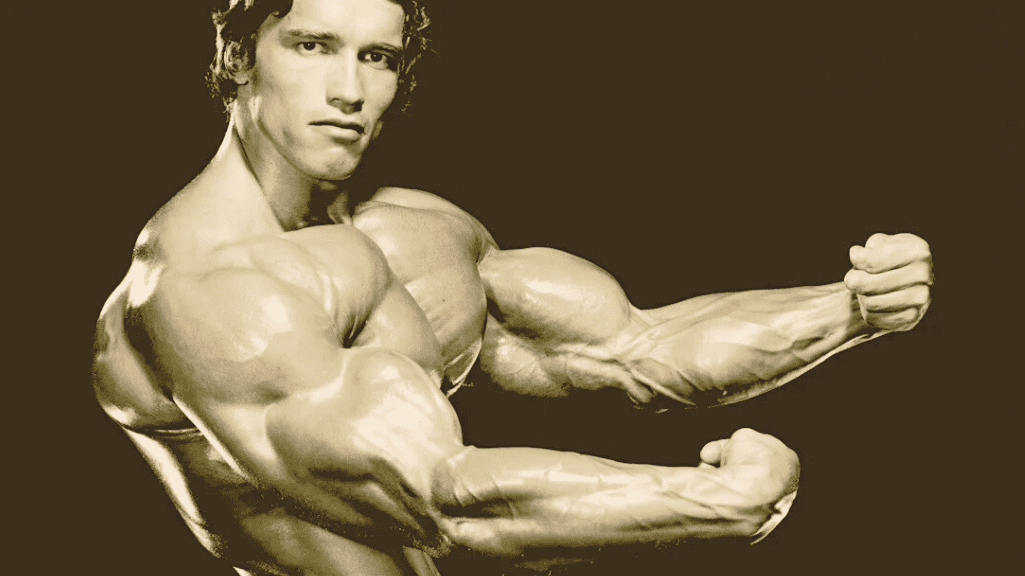
Why This Pose?
The Forearm Flex Pose is designed to bring attention to the forearm muscles, which often complement other areas such as biceps, triceps, and wrist flexors/extensors. This pose ensures that the lower arms are balanced with the upper body, creating a harmonious and well-rounded appearance. Additionally, the inclusion of small muscles like the wrist flexors and extensors further enhances the overall display of forearm development, ensuring no area is overlooked.
Step-by-Step Breakdown
Executing the Forearm Flex Pose requires precision and engagement. Here’s how to perform it:
- Position – Flex both forearms by curling the wrists upward.
- Muscle Engagement – Keep biceps and triceps slightly engaged to maintain balanced definition and symmetry.
- Focus – Ensure wrist flexors and extensors are subtly involved to refine the forearm display.
- Balance – Aim for equal tension between the upper and lower arm muscles for a complete forearm flex display.
This pose demonstrates the importance of bodybuilding poses in achieving a balanced and complete physique.
Importance of Mastering the Forearm Flex Pose
The Forearm Flex Pose is crucial for bodybuilders looking to highlight the muscular development of the forearms. As part of an overall bodybuilding routine, it ensures that lower arm muscles complement the upper body and create a visually balanced physique. The engagement of smaller muscles, such as wrist flexors and extensors, enhances the definition and separation, creating a more polished appearance.
Through consistent practice of the Forearm Flex Pose, bodybuilders can refine their forearm development while maintaining symmetry across their arms. This balanced approach helps in creating a more complete and impressive physique that stands out on stage.
In conclusion, the Forearm Flex Pose is an essential bodybuilding pose for showcasing the definition, size, and balance of forearms. By emphasizing muscular symmetry and complementing smaller muscles, this pose plays a vital role in creating an overall balanced and aesthetically pleasing upper body.
Bodybuilding Poses And Their Importance
Throughout this article, we’ve explored several essential bodybuilding poses that play a significant role in showcasing different muscle groups and achieving symmetry. These poses are carefully selected to highlight individual muscle development, symmetry, and the overall aesthetics of a bodybuilder’s physique. Below, we will summarize why each bodybuilding pose made its place in this guide and how it contributes to presenting a well-rounded, balanced physique.
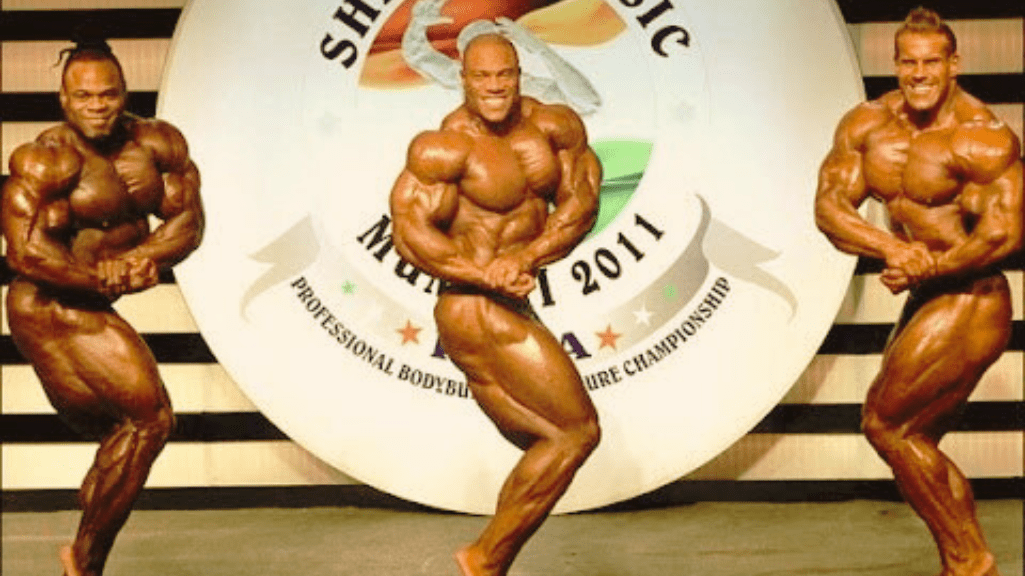
Key Bodybuilding Poses and Their Importance
- Quadriceps – Front Double Biceps Pose
This pose highlights the quadriceps, showcasing their size, definition, and symmetry. It brings attention to the entire thigh region from the front view, allowing bodybuilders to emphasize the aesthetics of the lower body. - Hamstrings – Seated Hamstring Curl Pose
The Seated Hamstring Curl Pose focuses on the depth and thickness of the hamstring muscles, separating them from the calves and glutes from the back view. It enhances the lower body’s overall presentation and balance. - Chest – Side Chest Pose
The Side Chest Pose is vital for demonstrating the thickness, width, and definition of the pectoral muscles. This pose provides an upper body view that emphasizes balance between shoulders, arms, and triceps. - Back – Back Double Biceps Pose
The Back Double Biceps Pose showcases lats, traps, and rear deltoids, giving a powerful display of thickness and width in the back muscles. It highlights the muscularity and overall development of the upper body from behind. - Biceps – Front Double Biceps Pose
The Front Double Biceps Pose is essential for showcasing peak bicep development while maintaining balance with forearms and shoulders. It focuses on symmetry and separation of the arms. - Triceps – Side Triceps Pose
This pose emphasizes the definition, size, and separation of the triceps muscles while balancing them with deltoids and lats. It plays a critical role in the overall aesthetics of arm development. - Trapezius and Neck – Traps Pose
The Traps Pose is crucial for demonstrating the muscularity and thickness of the traps. It highlights the upper back’s development and upper body balance. - Forearms – Forearm Flex Pose
The Forearm Flex Pose emphasizes the definition, size, and symmetry of the lower arm muscles. This balanced pose ensures wrist strength complements upper arm aesthetics. - Shoulders (Front) – Front Shoulder Pose
The Front Shoulder Pose is ideal for showcasing the width, definition, and balance of the deltoid muscles. It ensures symmetry and a well-rounded upper body appearance.
Expanded Historical Focus and Trends in Bodybuilding Competitions
| Decade | Symmetry | Muscle Mass | Conditioning | Presentation | Judges’ Preference | Notable Influencers |
|---|---|---|---|---|---|---|
| Pre-1940s (Early Bodybuilding) | 50% | 20% | 20% | 10% | Low | Eugen Sandow, Charles Atlas |
| 1940s-1950s (Golden Era) | 40% | 30% | 20% | 10% | Moderate | Arnold Schwarzenegger, Steve Reeves |
| 1960s-1970s (Golden Era Cont.) | 40% | 30% | 25% | 5% | High | Frank Zane, Sergio Oliva |
| 1980s (Massive Growth) | 30% | 40% | 20% | 10% | High | Lee Haney, Dorian Yates |
| 1990s-2000s (Size Over Symmetry) | 20% | 50% | 20% | 10% | Very High | Ronnie Coleman, Jay Cutler |
| 2010s (Shifting Toward Conditioning) | 25% | 25% | 40% | 10% | Extremely High | Phil Heath, Kai Greene |
| 2020s (Leaner, More Detailed Physiques) | 30% | 20% | 45% | 5% | Extremely High | Brandon Curry, Big Ramy |
Why These Bodybuilding Poses Were Chosen
These selected bodybuilding poses were chosen based on their ability to highlight specific muscle groups while ensuring symmetry and balance throughout the entire physique. Each pose serves as a tool for bodybuilders to display their hard work and development accurately. Here’s why these poses made the list:
- Emphasis on Specific Muscle Groups – Each pose focuses on one primary muscle group, allowing for in-depth showcasing.
- Symmetry and Balance – The poses ensure that muscles are displayed evenly, avoiding disproportionate development.
- Aesthetics – These poses contribute to an aesthetically pleasing and visually impressive physique, which is essential for competitions.
- Versatility – They cater to both competitive bodybuilders and those aiming to improve their general physique development.
Mastering these bodybuilding poses is crucial for maximizing the visual appeal of a bodybuilder’s physique. Practicing and perfecting these poses will not only enhance individual muscle group displays but will also lead to better overall balance and symmetry. Whether on stage or during personal training sessions, knowing how to execute these poses effectively is essential for success.
Bodybuilding Poses: FAQ Section
1. What is the purpose of bodybuilding poses?
Bodybuilding poses showcase specific muscle groups while ensuring symmetry and balance throughout the physique.
2. How do I perfect a bodybuilding pose?
Focus on proper form, engage the targeted muscles, and practice regularly to achieve symmetry and balance.
3. Can I use different variations of these poses?
Yes, variations can be used, but mastering the foundational poses enhances muscle development and symmetry.
4. Why is symmetry important in bodybuilding poses?
Symmetry ensures that muscles are displayed evenly, contributing to a balanced and aesthetic physique.
5. Which pose targets the hamstrings the best?
The Seated Hamstring Curl Pose is excellent for focusing on hamstring depth and thickness.
6. How often should I practice these poses?
Regular practice, at least 2-3 times per week, is recommended to improve and perfect each pose.
7. Are these poses suitable for beginners?
Yes, beginners can use these poses to build a strong foundation in muscle symmetry and development.
8. What is the most challenging bodybuilding pose?
The Back Double Biceps Pose is often considered challenging due to the need for balance and control across multiple muscle groups.
9. Can women perform these poses as effectively as men?
Absolutely, women can master these poses to showcase their unique muscle development and symmetry.
10. How do I incorporate these poses into my training routine?
Include them in your warm-ups, cool-downs, and dedicated posing practice sessions for the best results.
In conclusion, mastering these bodybuilding poses is essential for achieving a balanced, aesthetically pleasing physique. By focusing on specific muscle groups and refining each pose, bodybuilders can present themselves confidently on stage and in personal training sessions alike.
